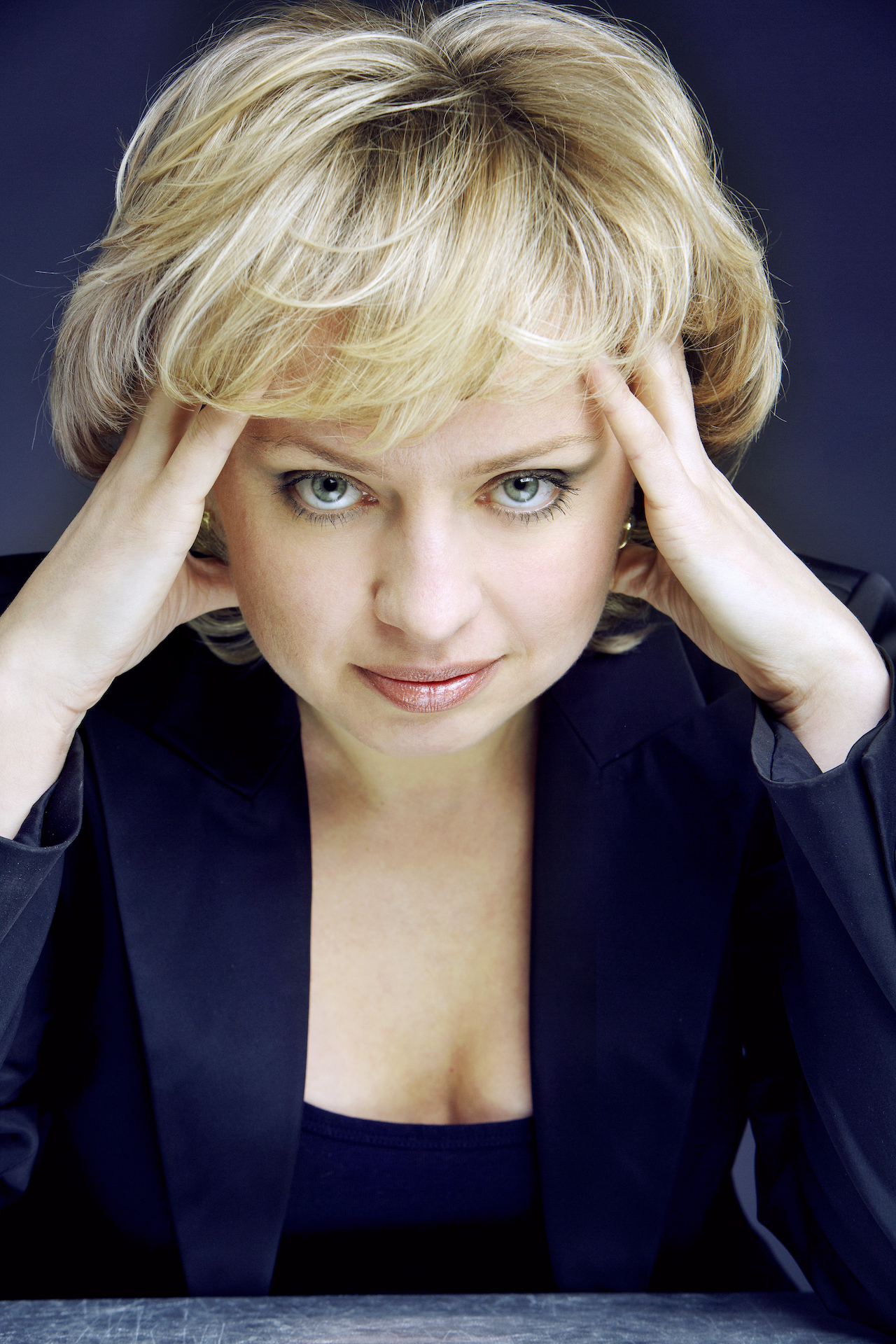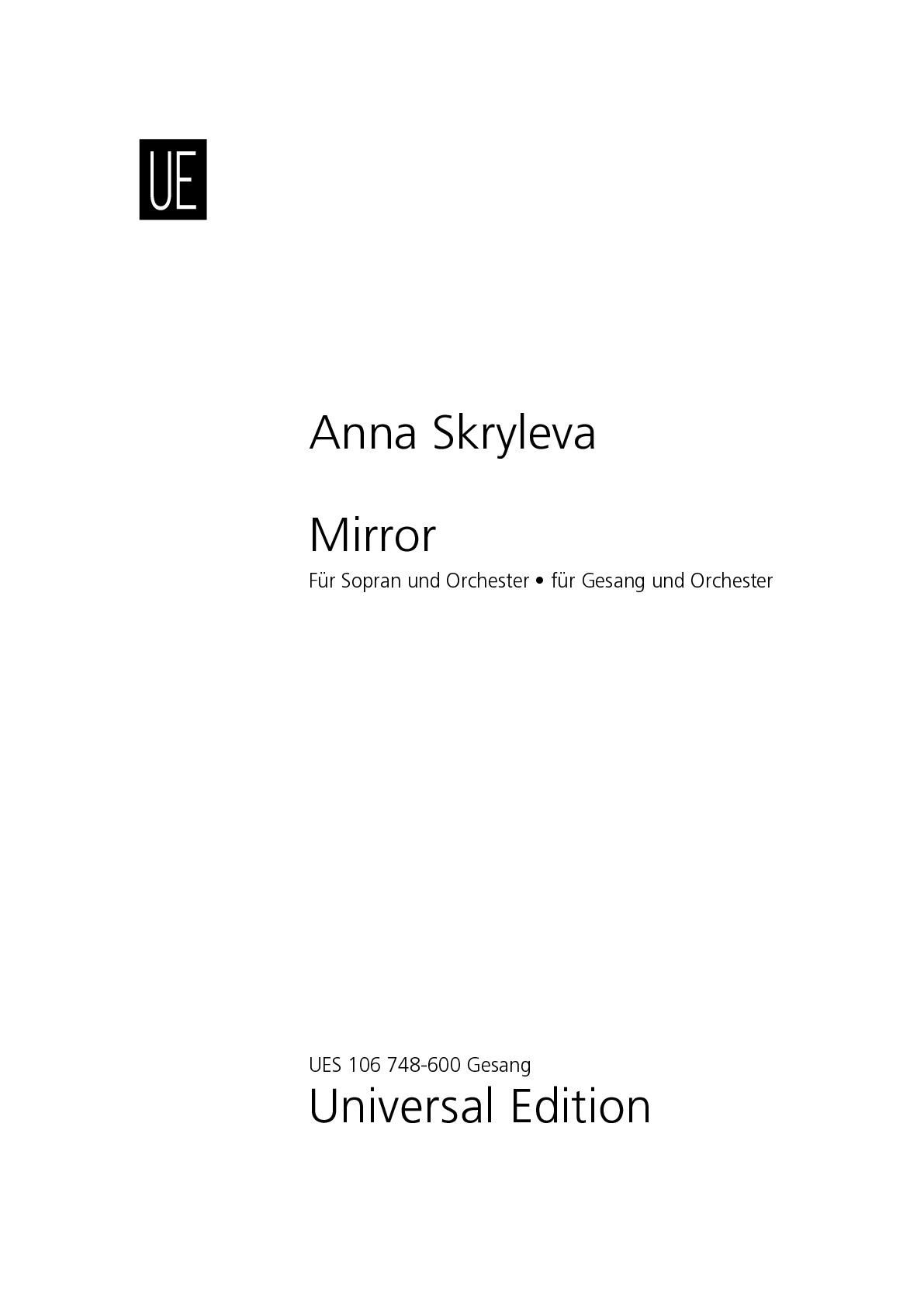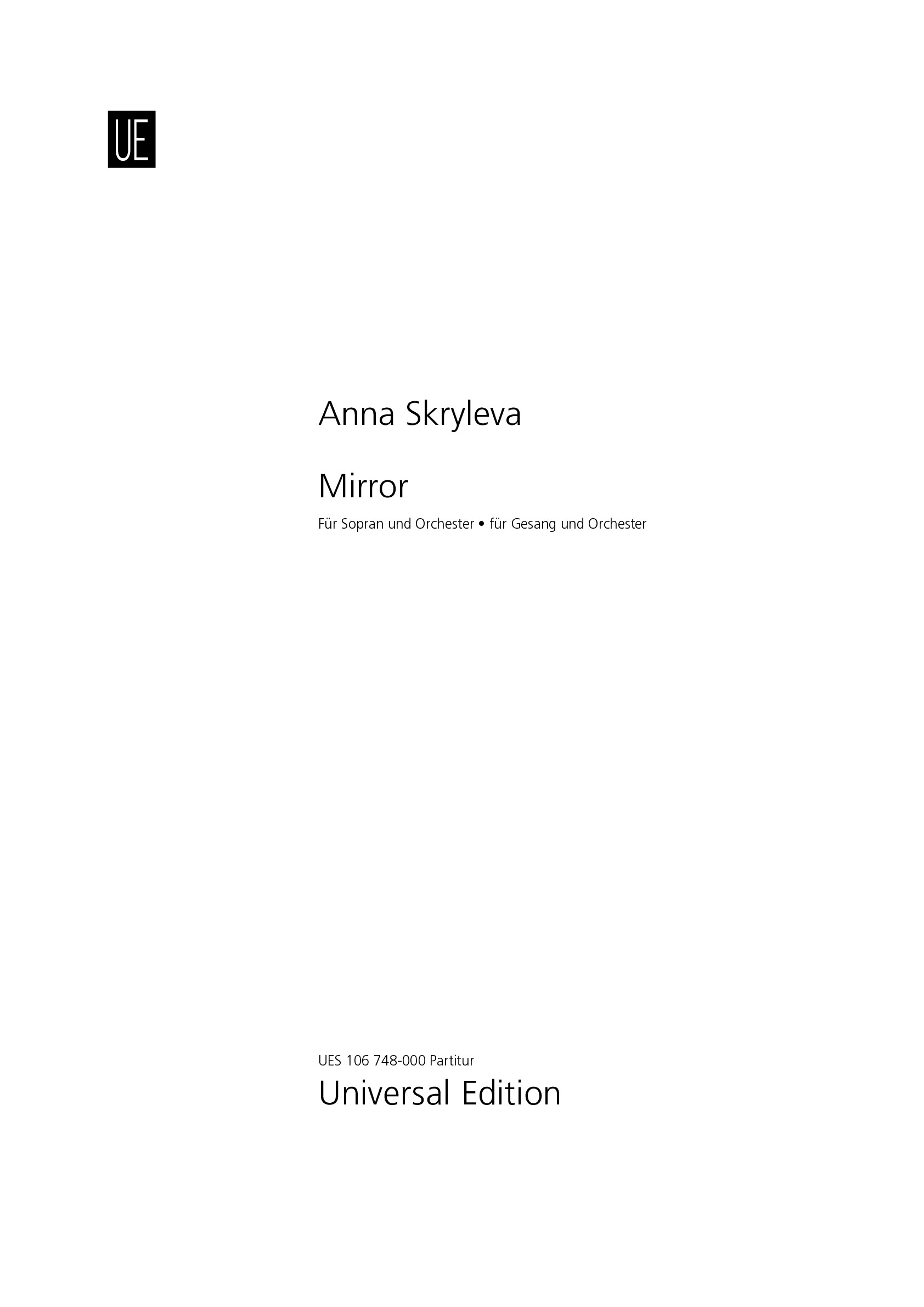

Anna Skryleva
Mirror
Short instrumentation: 3 3 3 3 - 4 3 3 1, timp, perc(3), hp, cel, str
Duration: 15'
Solos:
voice
Instrumentation details:
1st flute
2nd flute (+alto fl)
3rd flute (+picc)
cor anglais
1st oboe
2nd oboe
bass clarinet in Bb
1st clarinet in Bb
2nd clarinet in Bb
contrabassoon
1st bassoon
2nd bassoon
1st horn in F
2nd horn in F
3rd horn in F
4th horn in F
1st trumpet in Bb (+tpt(D))
2nd trumpet in Bb
3rd trumpet in Bb
1st trombone
2nd trombone
3rd trombone
tuba
timpani
1st percussion
2nd percussion
3rd percussion
celesta
harp
violin I (12 players)
violin II (10 players)
viola (8 players)
violoncello (7 players)
double bass (5 players)
Mirror
Printed/Digital
Translation, reprints and more


Anna Skryleva
MirrorOrchestration: Für Sopran und Orchester
Type: Dirigierpartitur
Sample pages
Audio preview
Video
Work introduction
The piece is musically based on the "Solresol" language. This planned language was developed at the beginning of the 19th century by the Frenchman Jean François Sudre: a kind of Esperanto on a musical basis. It's a thought that has long preoccupied Anna Skryleva: If music is indeed capable of bringing people of all nationalities together, it should be possible to use sounds to converse and unite people. So she became aware of "Solresol" and decided to compose a piece of music based on it. First of all, a "mirror poem" was created, which is the basis for the development of the themes and their counterpoints in "Mirror". In the middle of the work, this poem is sung in English by a soprano with orchestral accompaniment. Every note in this work carries with it a message that can only be deciphered with the "key" of Solresol. As a principle of composition, Schoenberg's twelve-tone theory could be considered a parallel. Whereby here it is the words that determine the sequence of tones: an exciting puzzle.
